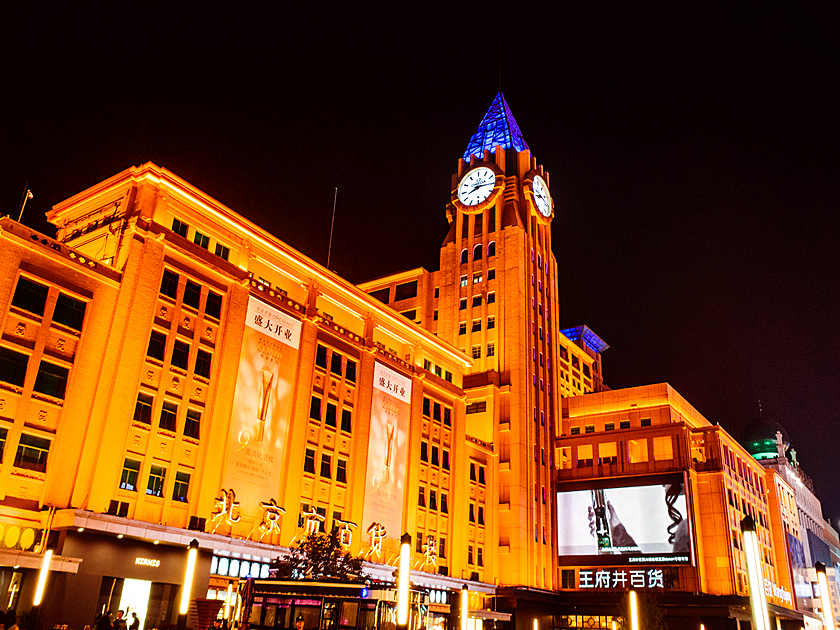Chinese Name: 王府井大街 Pronunciation: wáng fǔ jǐng dà jiē
Building Time: 1915
Best Visiting Season: All seasons
Recommended Time for Visit: 2-3 Hours
Length of the Street: About 1818 meters
Address: From East National Art Museum Avenue to East Chang'an Avenue, Dongcheng District, Beijing.
Simply Put: The most famous commercial street in China
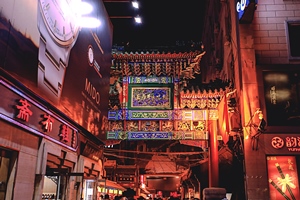
Wangfujing refers to Wangfujing Street, from East Chang'an Avenue in the south to the National Art Museum of China in the north. It is about 1.5 kilometers long and is the most famous commercial district in Beijing. Wangfujing's daily necessities, hardware and electrical supplies, clothing, shoes and hats, jewelry diamonds, gold and silver jewelry, etc., are dazzling with a wide variety of goods, and the commodity purchases and sales here are extremely large.
After the founding of New China, the Government reorganized and transformed Wangfujing Street, inherited and developed the traditional operating characteristics, built some large-scale commercial facilities, and formed a prosperous commercial area with Dongfeng Market and department stores as the main body. Today, Wangfujing Street has been refurbished to welcome Chinese and foreign guests with a brand new look.
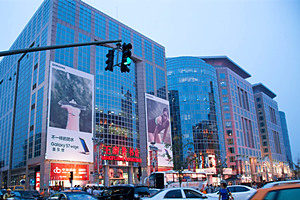
Wangfujing Street was named in 1915. During the Liao and Jin eras, Wangfujing was just an unknown village. After Dadu as Kublai Khan’s capital, this small village became lively and known as “Dingzi Street”.
During the Ming Chengzu period, ten palaces were built in this area, and they were renamed Shiwangfu or Shiwangfu Street. After the fall of the Ming Dynasty, the palace was also abandoned. Later, there were only eight palaces on the street left, and people called it Wangfu Street. During the reigns of Emperor Guangxu and Xuantong of the Qing Dynasty, the area began to prosper. Many vendors and shops appeared on both sides of the street, as well as an "official hall", which made Wangfujing a famous commercial street in the area.
In 1915, when the Ministry of Interior of the Beiyang Government drew the "Detailed Map of Beijing", it divided the street into three sections: the north part was called Wangfu Street, the middle part was called Bamiancao, and the south part was called Wangfujing Street because there was sweet water well (the well site is on the west side of the street, nowadays Datianshuijing Hutong, water well in Chinese is jing井). Later, people gradually called the whole street as Wangfujing.
"The Complete Map of Qianlong's Capital" and the "Measured Map of Beijing's Inner and Outer City" in 1913 both show that there was only one well on this street and it was located here. This well was obliterated in the 1920s and was discovered during the renovation of Wangfujing Street in 1998. It was protected on September 9, 1999. The well can be said to be the root of this street.
There are even more ancient remains. During the construction of the Oriental Square in 1996, cultural relics dating back 25,000 years from the late Paleolithic period were discovered 12 meters under the surface and with two gray-brown cultural layers. This shows that ancient humans once inhabited the Wangfujing area. More than 2,000 cultural relics had been discovered in an area of about 2,000 square meters. This is the first time that ancient human cultural relics have been discovered in the center of an international metropolis.
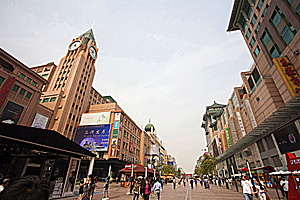
Wangfu Central is a fashionable high-end living center built by Hongkong Land in Beijing. It is located in the commercial and political core areas of the capital. Its design and scale are cleverly integrated with the historical heritage and essence of the Wangfujing area. It not only pays tribute to the history of the Wangfujing area but also helps this business district to rejuvenate.
Wangfu Central has more than 130 individual and unique merchants, of which 20 brands enter Beijing or the Chinese market for the first time, bringing quality life and retail experience to consumers and setting a new benchmark for high-end lifestyle retail.
Wangfu Central occupies an area of nearly 21,000 square meters in Wangfujing Commercial Street, Dongcheng District, Beijing. It has 43,000 square meters of retail space and includes the 73-room Beijing Wangfujing Wenhua Oriental Hotel, with a total construction area of 150,000 square meters. The project is equipped with 660 parking spaces and is located in the center of the capital's public transportation hub.
The cooperation projects between Wangfu Central and international institutions include the Serpentine Art Museum. This project marks a unique artistic alliance between Wangfu Central and the world-famous Serpentine Art Gallery in London. The Beijing Serpentine Art Museum is the Serpentine Art Museum’s first pavilion outside of London.
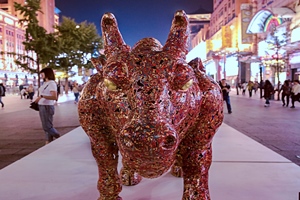
Wangfujing Walkway is one part of the whole of Wangfujing Street and occupies the middle two sections of the four sections of Wangfujing Street. It is 892 meters long and 40 meters wide. It was renovated on the 11th of September 1999.
Wangfujing Walkway, the main street is spacious and flat; the ground is paved with red granite; the wires are all turned to underground; there are independent seats on the street; there is a trash can every forty meters. Wangfujing Walkway is classified as the “First Commercial Street in Beijing”, and the commercial Wangfujing Street style is mainly “modern” and “new trend”.
Wangfujing Department Store is on the west side of Wangfujing Walkway, and Beijing APM on the east side of Wangfujing Walkway. Many large specialized shops, such as arts and crafts shops, Xinhua Bookstore, and foreign bookstores, which were built one after another after the liberation, are also concentrated on this street.
In 1955, the Beijing Department Store which later was developed into the Wangfujing Department Store was established and opened. Because it was the first large-scale department store invested and built by the state after the founding of the People's Republic of China, so people also called it the "first store in New China."
The Xindong'an Market was later developed into the Beijing APM shopping center. Dong'an Market opened in 1903 and is the first comprehensive market established in Beijing. It is named after its proximity to Dong'anmen and has a history of more than 100 years. In 1993, it was jointly constructed by Beijing and Hong Kong. It was built on the original site of Dong' an Market and was renamed Beijing Xindong' an Market. In 2007, Beijing Xindong’an Market was renovated and renamed Beijing APM shopping mall.
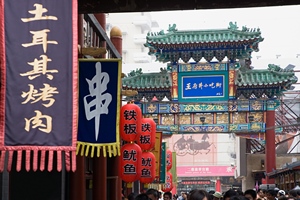
Wangfujing Snack Street is a place of famous and delicious snacks in Beijing and all over the world. It is located on the south side of the Friends World Mall on Wangfujing Street. There are more than 100 shops and stalls in the street. It is a street specializing in Beijing and other local snacks, tourist souvenirs, and folk crafts.
Wangfujing Snack Street occupies an area of more than 2,000 square meters, with complete facilities and full-time operation. It represents local eating habits and customs. In addition to local snacks, there are also old-style stalls that specialize in selling and making folk crafts and folk products. Many crafts that have been passed around among normal people will be displayed here, and some skilled craftsmen will show the skill here.
This street is very rich in creativity and design, and it is quite innovative, integrating the traditional architectural features and market culture of the ancient capital Beijing. In a modern metropolis, this street seems to be a space reserved by history, still maintaining the original style of the ancient capital. It is not only a "street in the street", but also a "scenery in the well", providing people with a good place to visit and enjoy.
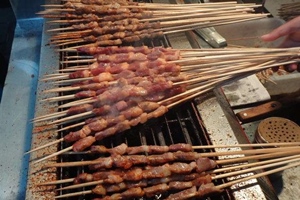
From the entrance of the snack street, the various snack stalls are next to the doorposts, spread out in sequence, and extend into the inside. This open linear distribution makes many snacks prominently displayed in front of passersby. The decorative door of the snack street is just an empty door frame. Compared with the transparent glass door of the shopping mall, it welcomes the glance of the eye more thoroughly and has a lot less mystery.
The entrance section of the snack street sells snacks that can be quickly operated and easily taken away, such as kebabs, sugar-coated haws and pancakes. These shops are just windows that can sell things. The decoration style and pattern are unified in traditional classical decoration. Individual stalls take into account the regional differences of snacks. For example, a Turkish barbecue stall was rendered in a distinctive Islamic style. However, the decoration of most booths is the same, or even highly consistent to some extent.
Zone A and Zone B are the in-depth development of the main part of the snack street, where the structure of all the pavements has also become complicated. Each store not only has a kitchen but also has classic and beautiful small restaurants, decorated with a nostalgic feeling. Here, tourists do not have to eat so hastily and hurriedly at the entrance but can sit down leisurely and feel the atmosphere of old Beijing.
Zone A is the deep expansion of Zone B. Zone A emphasizes the creation of nostalgia and poetry more than Zone B and highlights the essence of historical consumption in the snack street in the symbolic representation. Almost all the shops in Zone A have poetic store names, such as Nature (大自然), Bat Hall (蝠厅), Shuyun (蜀云), Wenshe (问舍) and so on. In other areas of the snack street, whether it is the entrance area, Zone B or other sporadic shops, they are at most named after a kind of snack and do not have their shop name.
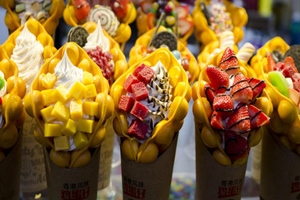
In addition to eating, the Folk Culture Village opposite to Zone A in the snack street is also full of stalls open to the center of the street. A large number of gadgets symbolizing China’s "history" and "folk customs" are stacked and displayed, from stamps and cheongsam, paintings and calligraphy, imitation Terracotta Warriors, to Beijing opera facial masks, compass models, all of these competing for performance. It seems that thousands of years of heavy history are frozen and reduced in these spectacle images.
There is also a large modern billboard in the snack street, which painted the original scene of the old Beijing Wangfujing Snack Street with explanatory text. The billboard is not far from the entrance of the snack street, like a wall of light, which serves as an icon and sign for the passing crowd to enjoy the nostalgic historical atmosphere.
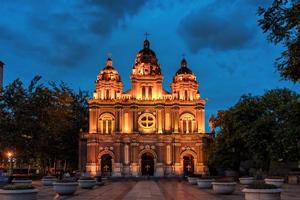
St. Joseph's Church, is also known as the East Church. In 1655, it was built in Beijing. In the following two centuries, it was destroyed three times. The existing building was rebuilt in 1905.
The whole building is of brick and wood structure, gray brick wall, which belongs to the western classical style but incorporates the characteristics of Chinese architecture. The facade proportion is rigorous, the walls are exquisite, the masonry is exquisitely carved, and it is one of the famous Catholic churches in Beijing. In 2000, the Beijing Municipal Government invested in the comprehensive renovation of the church and designed and constructed the church square.
St Joseph's Church is one of the four largest Catholic churches in Beijing and was founded by two priests, Lilius and Avens. In the courtyard of the east hall, there is the Catholic church in the middle. It faces the west and is 25 meters wide. There are about 30 rooms in total inside the church.
The hall is supported by 18 circular brick pillars with a diameter of 65 cm. The pillar base is square. On both sides of the hall are paintings of the Crucifixion. There are classrooms in the south and west of the hall, and a courtyard in the east with flower ponds, bungalows, and buildings, which are the residences of priests. Covering an area of nearly 10,000 square meters, it is a key cultural relic under protection in Dongcheng District.
Take bus 103, 104, 108 or 111 and get off at Dengshi Xikou Station.
Take bus 1, 20, 103, 104, 120, 140 or Te 11, get off at Wangfujing Station.
Take Metro Line 1 and get off at Wangfujing Station.
Chinese: 请带我去王府井大街。English: Please take me to Wangfujing Street.
If you go to Wangfujing Street from the center of Tiananmen Square, it takes about 17 minutes (25 yuan).
If you go to Wangfujing Street from the Beijing International Airport, it takes about 45 minutes (95 yuan).
If you go to Wangfujing Street from the Beijing Daxing International Airport, it takes about 60 minutes (170 yuan).
If you go to Wangfujing Street from the Beijing West Train Station, it takes about 30 minutes (40 yuan).
